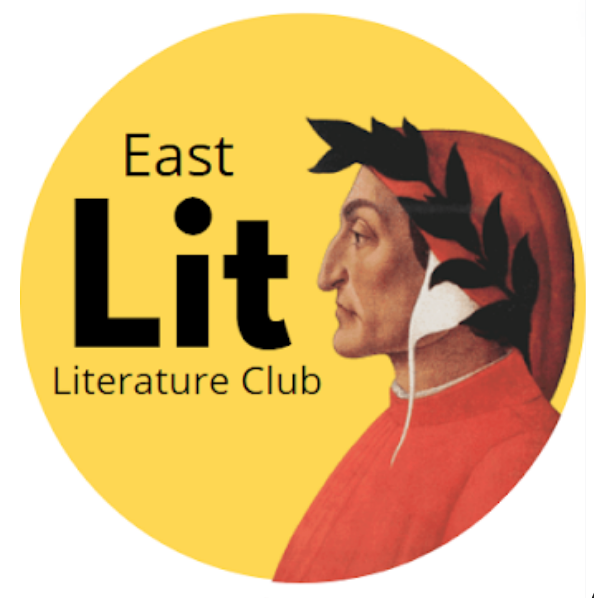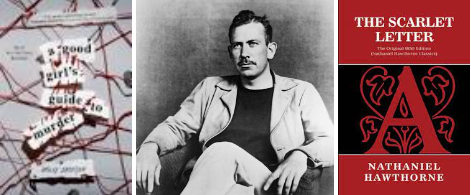East Literature Club June Reading Recommendations

East Literature Club is a club at Cherry Hill East dedicated to people who love reading.
June 5, 2023
Stepping into June-vacations are on our minds! The temperatures are rising, school is winding down, and you’re probably looking for your next poolside/beach read. Courtesy of East Literature Club and fellow reading aficionados, here are your June book recommendations!
The Scarlet Letter, by Nathaniel Hawthorne-Andrew Langmuir (‘24)
Nathaniel Hawthorne’s novel, The Scarlet Letter, stands as a timeless masterpiece that continues to captivate readers with its profound exploration of sin, guilt, and redemption. Set against the backdrop of 17th-century Puritan society in Boston, the novel delves deep into the complexities of human nature and the consequences of moral transgressions.
Hawthorne’s skillful storytelling and vivid imagery transport readers to a world of rigid social codes and moral hypocrisy. The character of Hester Prynne, marked by the scarlet letter “A” as a symbol of her adultery, emerges as a resilient and complex figure. Her journey of self-discovery and her struggles in a judgmental Puritan society make her a compelling protagonist.
The Scarlet Letter’s strength lies in its exploration of the relationship between guilt, shame, and redemption. Hawthorne masterfully delves into the internal conflicts of his characters, particularly the tormented Reverend Arthur Dimmesdale, whose hidden guilt reduces him to a lifeless, shriveled man. The moral ambiguity surrounding Hester’s husband, Roger Chillingworth, adds an intriguing layer of suspense and ethical complexity to the narrative.
Hawthorne’s prose, though occasionally dense, is rich with symbolism and metaphor. The vivid descriptions of the New England landscape and the contrast between light and darkness contribute to the atmosphere of the story. The careful attention to detail immerses readers in the Puritanical society and invites contemplation on the universal themes of sin, repentance, and the search for redemption. The Scarlet Letter’s enduring relevance lies in its ability to raise thought-provoking questions about societal norms, individual freedom, and the nature of morality. Hawthorne’s exploration of the human condition transcends time and remains deeply resonant, challenging readers to reflect on their lives and moral choices.
In conclusion, The Scarlet Letter is a profound novel that continues to captivate readers with its exploration of sin, guilt, and redemption. Nathaniel Hawthorne’s masterful storytelling, complex characters, and enduring themes make it a literary classic that stands the test of time. Whether one is drawn to its moral dilemmas, its rich symbolism, or its timeless relevance, The Scarlet Letter is a must-read for those seeking a deeply introspective experience.

John Steinbeck-Ella Kang (‘24)
John Steinbeck is considered as one of the greatest American writers of the 20th century, but is perhaps more well known in the Cherry Hill East community for authoring the assigned AP Lang summer reading book, The Grapes of Wrath. Regardless of this fact, Steinbeck undoubtedly had a profound influence on literary community outside of East, as throughout his work, he humanized the marginalized, raised awareness about environmental issues, gave a voice to those subject to social injustice, and above all, created work that lasted beyond his own lifetime- work that continues to inspire and resonate with readers today.
John Steinbeck (in full John Ernst Steinbeck Jr) was born on February 27th, 1902 in Salinas, California, the “Salad Bowl of the Nation”. There, Steinbeck found a sense of patriotism in the the men and women who tolled day and night in Central Valley- something that would undoubtedly affect his later literary career. In 1919, John Steinbeck enrolled at Stanford University, but over the next six years, he would drift in and out of school, eventually leaving behind his prospective degree in English for good in 1925. From there, he moved across the country to New York City, but soon returned to his native state to hone his craft.
Steinbeck’s first ventures into literature were unsuccessful, but in 1935, he would achieve popularity for the first time with Tortilla Flat. However, in the late 1930s into the 1950s, he would write hit after hit, creating works such as Of Mice and Men (1937), The Graphs of Wrath (1939), and East of Eden (1952)- all of which stand as classics today.
John Steinbeck is also noted for having written propaganda for the US federal government during World War Two and creating the film adaptations of some of his lesser-known works, such as Forgotten Village (1941) and Viva Zapata! (1952).
Today, Steinbeck’s reputation relies mostly on the environmental novels with proletarian themes he wrote in the 1930s, works that remain important pillars of American literature today.
A Good Girl’s Guide to Murder, by Holly Jackson-Krisha Bhagat (‘24)
Drama, suspense, romance, action, thrill. Whatever you want, this book got it all. Holly Jackson, a Good Girl’s Guide to Murder, is an addictive thriller that doesn’t leave the audience on a cliffhanger.
“A Good Girl’s Guide to Murder” is a suspenseful and captivating young adult mystery/action novella that has received much credit for its compelling plot and intriguing characters. The story opens up with 17-year-old Fitz-Amobi, who is simply trying to discover a project she can uncover for her final senior assignment. Fitz being, a bright and determined protagonist, takes it upon herself to investigate a closed murder case. 5 years ago, Andie Bell was murdered by her boyfriend Sal Singh, but the body was never to be found. Pip has doubts of the original verdict and decides to reexamine the closed case but once she starts, she unveils so much more. Working alongside Ravi Singh, the brother of the suspect, he discovers a pathway of dark secrets that might be able to prove the alleged murderer of the case innocent. But someone in Fairview doesn’t want the truth to unravel and Pips may be in danger.
In this novel, Pippa’s tenacity and intelligence visibly shine as she unravels the truth behind the crime, facing numerous challenges and uncovering shocking revelations along the way. At the beginning of the novel, nobody had any faith in the young girl. She received little to no support from her peers and was heavily disregarded when she spoke of the dead suspect’s name. Yet her persistence prevailed and she was able to discover the truth and spread it to all of Fairview.
One of the strengths of this book is the well-crafted suspense. The author, Holly Jackson, successfully builds tension and keeps readers actively engaged throughout the story. As Pippa delves deeper into the case, the stakes rise, making it difficult to put the book down. The book is absolutely captivating, with new problems entering from left to right, constantly adding to the suspense of the novel. With the introduction of Sal Singh’s previous friends, comes the mixture of drama, suspense, romance, and thriller.
Moreover, the characters in “A Good Girl’s Guide to Murder” are multi-dimensional and relatable. Pippa is a refreshing and strong-willed protagonist, whose determination to seek justice is admirable. Ravi is a loving, wholesome friend who goes above and beyond to prove his brother’s innocence. All the supporting characters are thoroughly developed, itching having their distinct traits and complexity, which adds its own layer of intrigue to the narrative.
Another notable aspect of the book is its exploration of various themes. It delves into the nature of truth and the impact of personal biases and assumptions. It presents the idea of chasing after your values and the consequences of holding secrets. Throughout Pippa’s investigation, the audience is challenged to question their own perceptions and consider the complexities of human behavior.
Overall, “A Good Girl’s Guide to Murder” is a gripping, addictive, and thought-provoking novel that appeals to fans of mystery and thriller genres. It combines an engaging plot, well-drawn characters, and thematic depth to create an immersive reading experience. It’s an amazing novel and won’t leave you wanting more.






